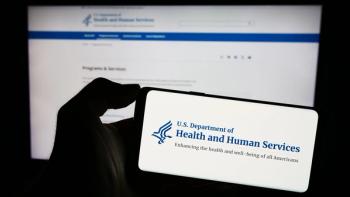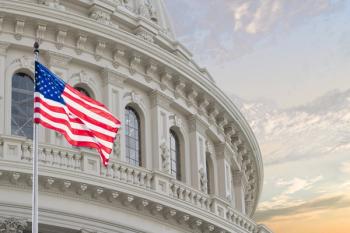
Congress considers $1.5 billion for veterinary facilities
Washington — Association of American Veterinary Medical Colleges (AAVMC) officials want Congress to strengthen the nation's veterinary programs by more than $1.5 billion.
WASHINGTON — Association of American Veterinary Medical Colleges (AAVMC) officials want Congress to strengthen the nation's veterinary programs by more than $1.5 billion.
Dr. Andrew Maccabe
The proposal establishes a 10-year federal grant program for capital improvements, including expansion of veterinary programs to boost numbers of biomedical research and public health DVMs. At presstime, veterinarian Sen. Wayne Allard introduced Senate Bill 914, known as the Veterinary Workforce Expansion Act of 2005. If passed, the program would mark the first time veterinary institutions have received significant federal aid in more than 30 years.
Sen. Wayne Allard
It's early, but AAVMC Associate Executive Director Dr. Andrew Maccabe says the pitch on Capitol Hill has been well received. Driving the cause is a real need for public health veterinarians. And a seemingly prudent move to solicit Health and Human Services instead of the financially strapped United States Department of Agriculture bolsters the bill's chances, he says.
"We believe the timing is ripe for federal investment in medical education," Maccabe says. "It's absolutely critical at this point because of the increase in emerging zoonotic infectious diseases and unintentional introduction of foreign animal diseases. It's really an issue of national security."
Public health practice
S. 914 calls for building "national capacity in research and training in prevention, surveillance, diagnosis and control of newly emerging and re-emerging infectious diseases." To answer the nation's protection needs, the Bureau of Labor Statistics predicts there will be 28,000 job openings in veterinary medical profession by 2012.
That bodes well for the expansion for veterinary medicine, which can't happen without proper education and training, the legislation says. Specifically speaking, the bill proposes to award competitive grant programs to veterinary institutions annually for 10 years. The catch: The money must be used as a "guarantee to increase the number of veterinarians in the workforce." Construction, equipment purchases and training top the list of proposed covered expenses (See Table 1).
Table1 Veterinary Workforce Expansion Act of 2005: Budgetary breakdown
Allocating obstacles
Dean Ralph Richardson, DVM, dreams of adding classrooms, faculty and seats to Kansas State University's veterinary program.
He calls the Veterinary Workforce Expansion Act along with the National Veterinary Medical Services Act (NVMSA) the "most significant pieces of legislation to ever impact the profession." While the NVMSA authorizes the Secretary of Agriculture to provide loan repayment for DVMs practicing in shortage areas, the $60-million program has stalled due to lacking financial support (see DVM Newsmagazine's May cover article "Leaders eye downscaled plan to aid rural veterinarians"). Proponents fear a repeat for the Veterinary Workforce Expansion Act, which must go up for allocation after the lawmakers pass the bill's objectives.
Curriculum reform
Should the program receive full funding, $1.5 billion would turn out much-needed graduates in public health, public practice, food safety and biosecurity, says Dr. Michael Blackwell, dean of the University of Tennessee's veterinary college. "Currently, academic veterinary medicine is not positioned to adequately address these vital issues," he says.
The money also might end the trend of financially stretched veterinary programs turning to teaching hospitals and human medical research grants to fill state assistance and tuition gaps. The Veterinary Workforce Expansion Act promises to alter a system that favors small animal medicine, Richardson adds.
News break
"We desperately need to shore up the parts of our profession that have gone lacking," he says. "We can continue down one road of preparing graduates for companion animal practice, or we can regain a balance for our profession."
Newsletter
From exam room tips to practice management insights, get trusted veterinary news delivered straight to your inbox—subscribe to dvm360.






